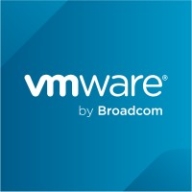

AWS Trusted Advisor and VMware Tanzu Platform are both competitors in the cloud services market. AWS Trusted Advisor stands out in AWS-based environments for its efficient resource optimization, while VMware Tanzu Platform offers superior multi-cloud capabilities and DevOps integration.
Features: AWS Trusted Advisor provides insights for AWS resource optimization, focusing on cost savings, performance, security, and fault tolerance. VMware Tanzu Platform provides a comprehensive suite of features for modern application development and offers broad multi-cloud operations with Kubernetes integration. Its extensive scalability options set it apart from AWS Trusted Advisor’s specific optimization capabilities.
Ease of Deployment and Customer Service: AWS Trusted Advisor is integrated into the AWS ecosystem, allowing easy deployment with immediate access and benefiting from AWS's established support channels. VMware Tanzu Platform requires a more intricate deployment process due to its multi-cloud setup, demanding a significant initial time and resource investment but supporting extensive application modernization efforts.
Pricing and ROI: AWS Trusted Advisor has a lower initial cost, often bundled with AWS services, ensuring faster ROI through performance insights. VMware Tanzu Platform involves higher upfront costs due to extensive infrastructure needs, yet delivers significant ROI through long-term efficiencies across multi-cloud environments with deeper integration and scaling advantages.
| Product | Market Share (%) |
|---|---|
| AWS Trusted Advisor | 1.0% |
| VMware Tanzu Platform | 1.1% |
| Other | 97.9% |


| Company Size | Count |
|---|---|
| Small Business | 5 |
| Large Enterprise | 3 |
| Company Size | Count |
|---|---|
| Small Business | 10 |
| Midsize Enterprise | 3 |
| Large Enterprise | 10 |
AWS Trusted Advisor is your customized cloud expert! It helps you to observe best practices for the use of AWS by inspecting your AWS environment with an eye toward saving money, improving system performance and reliability, and closing security gaps.
VMware Tanzu Platform is designed for cloud-native development and management of Kubernetes, CI/CD processes, microservices, and containerized workloads. It supports deployments both on cloud and on-premises, providing centralized management via Mission Control.
VMware Tanzu Platform offers seamless integration with vSphere, ESX, and vSAN, supporting centralized cluster management and lifecycle management. The platform provides a GUI for monitoring CI/CD pipelines and network policies, enhancing multi-tenancy and Day 2 operations. Users can easily manage Kubernetes clusters, monitor applications, and integrate with tools such as GitHub, GitLab, Cloud Foundry, and Azure. It ensures compliance and security for service providers, financial institutions, and businesses.
What are the key features of VMware Tanzu Platform?
What benefits and ROI should users look for in VMware Tanzu Platform reviews?
Industries such as financial institutions, service providers, and businesses requiring rigorous compliance and security deploy VMware Tanzu Platform. These entities benefit from centralized management, streamlined DevOps processes, and integrated tools, enhancing their capabilities in cloud-native developments and containerized workloads.
We monitor all Cloud Management reviews to prevent fraudulent reviews and keep review quality high. We do not post reviews by company employees or direct competitors. We validate each review for authenticity via cross-reference with LinkedIn, and personal follow-up with the reviewer when necessary.